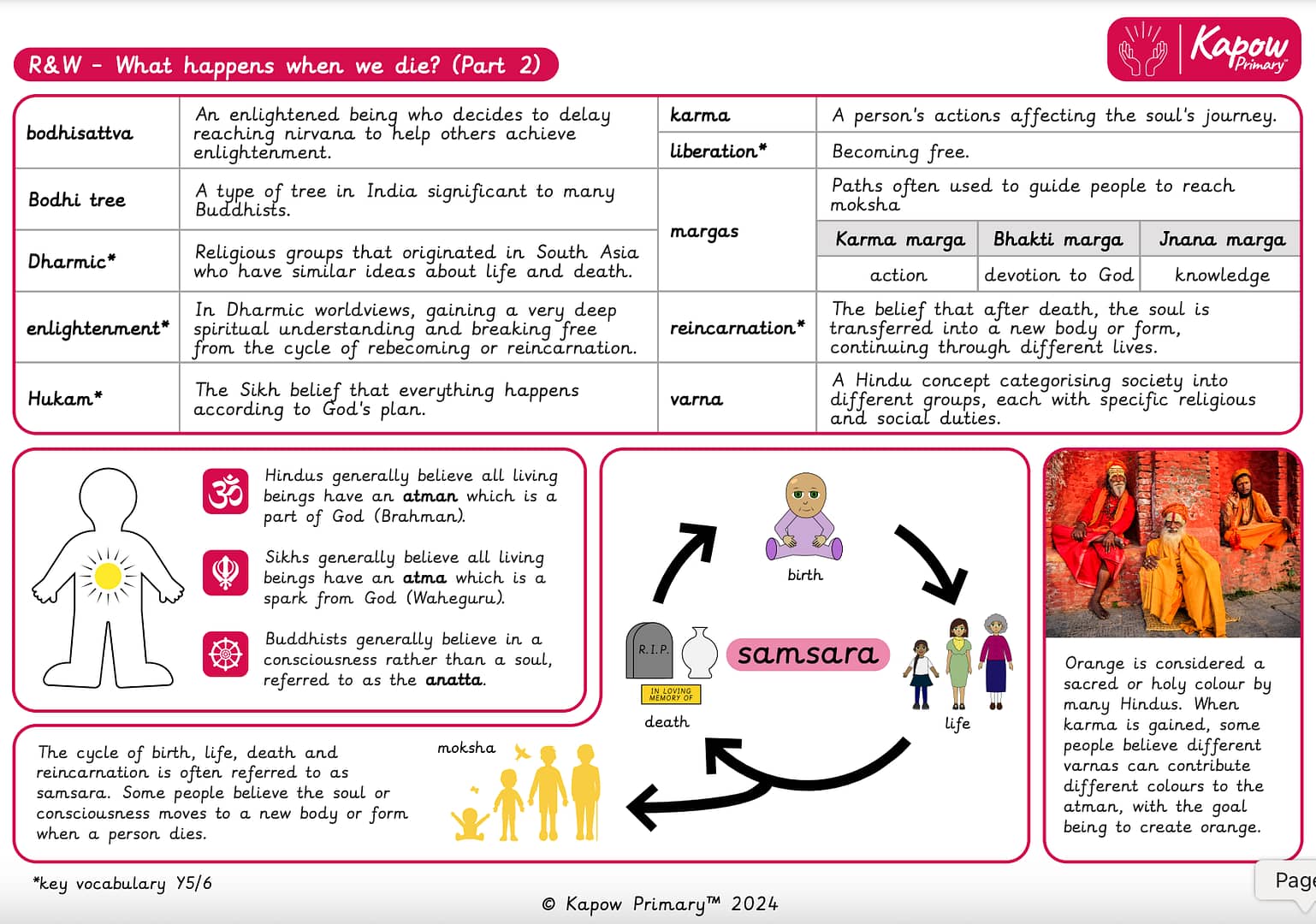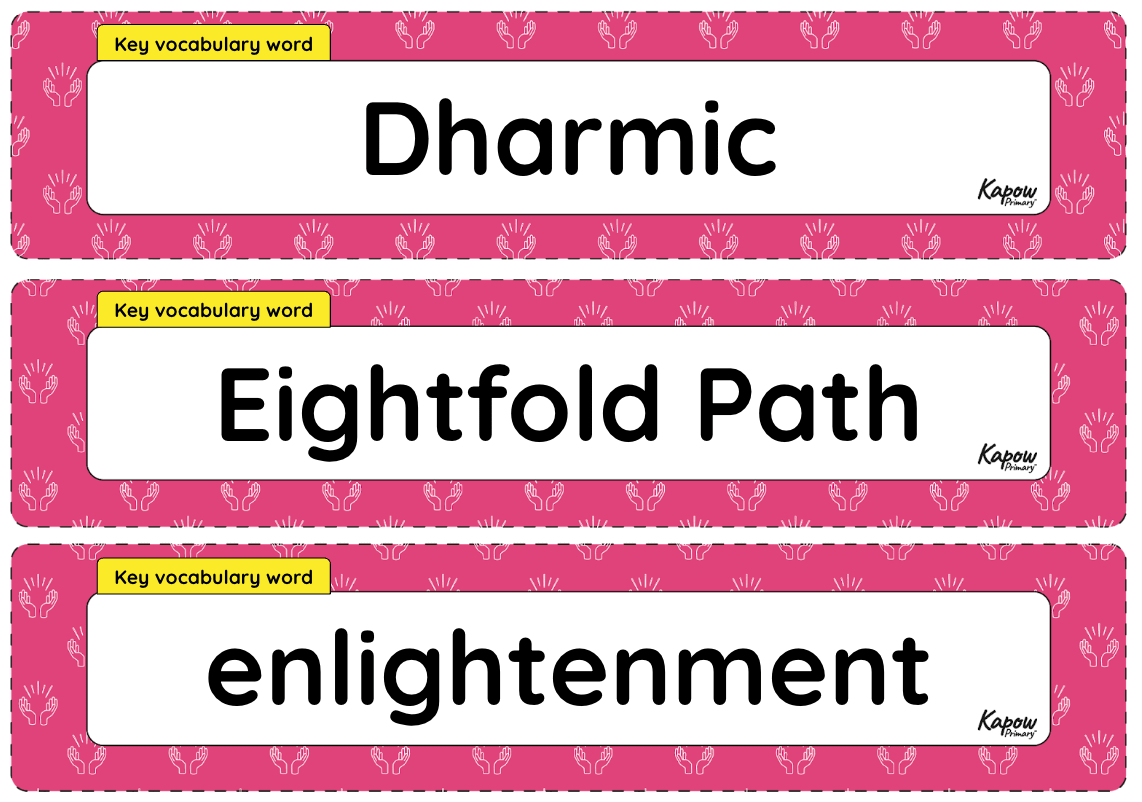Y5/6 (A): What happens when we die? (Part 2)
Continuing to investigate concepts relating to death and exploring the concepts of reincarnation and karma.
- Subjects >
- Religion and worldviews >
- Mixed-age >
-
Y5/6 (A): What happens when we die? (Part 2)
Unit outcomes
Pupils who are secure will be able to:
- Recognise beliefs about the soul being part of God.
- Identify clues that Hindus and Sikhs generally believe in the soul experiencing more than one life.
- Recognise that the ultimate goal for many Hindus and Sikhs is freedom from reincarnation.
- Use the terms moksha, mukti and nirvana to describe enlightenment and freedom from samsara and reincarnation.
- List ways a person can gather karma through actions and experiences.
- Suggest ways some Sikh practices and funeral rites may comfort someone experiencing death.
- Discuss the meaning of moksha and nirvana, drawing similarities from them.
- Consider ways enlightenment can be represented in art.
Caution:
- This unit explores the concept of death, including various beliefs and practices surrounding it.
- Create a safe space for the children to discuss and consider their ideas about it.
- Consider any recent bereavement or personal issues pupils may have and be ready to consult with the Senior Leadership Team if necessary.
- Modify lessons based on pupil needs and emotional readiness; some lessons offer alternative activities for sensitive topics.
- It is recommended to inform parents and carers before teaching this unit.
Suggested prior learning
Y5/6 (A): What happens when we die? (Part 1)
Get startedIf needed, watch the video for Y5/6 (A): What happens when we die? (Part 1) before teaching this unit.
Lessons
Y5/6 (A): Lesson 1: If there is a soul, where does it go?
- To explain some Dharmic beliefs about the soul.
Y5/6 (A): Lesson 2: What is samsara?
- To recognise beliefs about samsara and reincarnation in some Dharmic religions.
Y5/6 (A): Lesson 3: How might someone reach moksha?
- To recognise factors that may contribute to someone breaking the cycle of reincarnation and samsara by exploring varnas.
Y5/6 (A): Lesson 4: How can people find comfort after death?
- To describe how certain practices and traditions may help a Sikh person cope with the death of someone.
Y5/6 (A): Lesson 5: What is nirvana?
- To express ideas about enlightenment based on Buddhist beliefs.
Y5/6 (A): Lesson 6: What does enlightenment look like?
- To express ideas about enlightenment based on Buddhist beliefs.
Key skills
Key knowledge
Related content
Unit resources

Knowledge organiser – R&W Y5/6 (A): What happens when we die? (Part 2)
Aimed at pupils, two pages providing key facts and definitions from the unit 'What happens when we die? (Part 2).

Vocabulary display – R&W Y5/6 (A): What happens when we die? (Part 2)
A display version of the vocabulary from the unit 'What happens when we die? (Part 2)'.
Cross-curricular opportunities
English: Spoken language; Reading.
Science: Properties and change of materials.
Art and Design.
RSE: Respectful relationships.
British values: Mutual respect; Tolerance of those with different faiths and beliefs.

